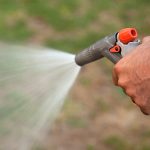A healthy garden can defend itself without the need for chemical treatments. But if you discover something is ailing it, define the problem before you treat it.
We share the planet with millions of beings, including tiny ones that are invisible to the naked eye. It benefits us all to act with responsibility.
So before you attempt to eradicate any and all pests in your garden, remember not all bugs are bad. In fact, only two percent of insects are actually pests. That means 98 percent of insects are benign or beneficial to us!
Follow these three steps to decide if treatment is even necessary.
-
Identify the specific problem affecting your crop or plant.
Only then can we apply the correct treatment measure. For example, determine if the problem is insects, fungi, nematodes, etc.
-
Know when to treat it.
Insects have different life cycles. Take the citrus leafminer (Phyllocnistis citrella), for example. This fly has four life cycles that last about three to seven weeks. It’s important to apply the correct treatment at the right time, otherwise you will yield no results.
-
Apply the correct concentration.
It’s important not to overdo the application as that could do more harm than good. When applying a treatment, follow the instructions on the bottle to the letter.
-
The most important thing to remember:
A healthy garden can defend itself without the need for chemical treatments.
This begins with selecting the right plants for the right site, and caring for their needs appropriately.




